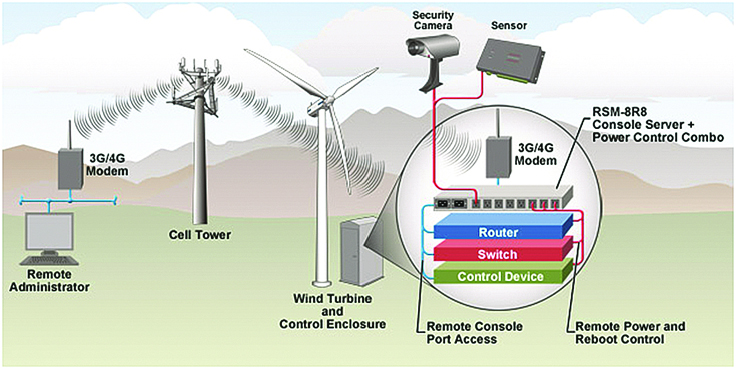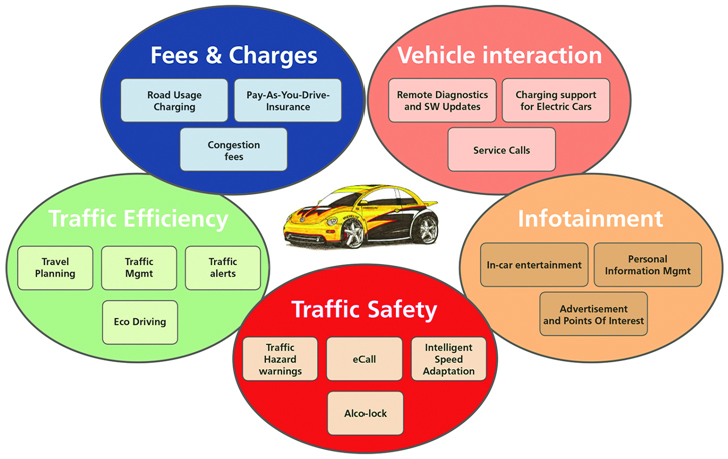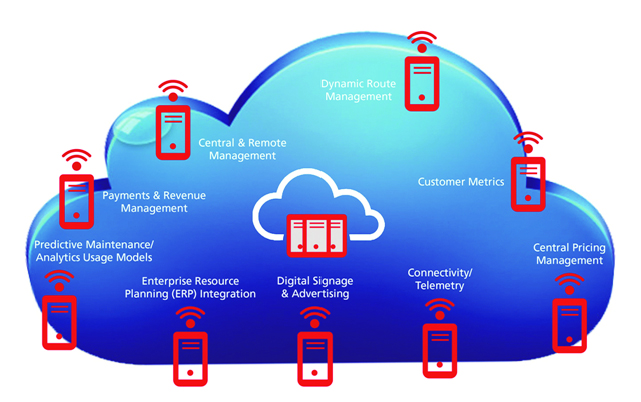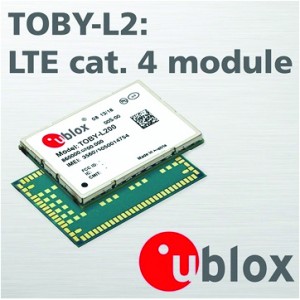The billions of dollars invested by service providers in LTE infrastructure, coupled with the growth of 4G-enabled mobile phones and tablets is creating opportunities for new billable services in the machine-to-machine (M2M) sector. This article looks at 12 of these emerging revenue sources for LTE-based applications and services.
Remote security
LTE will enable cost-effective placement and video streaming in both covert and hard-to-access locations. It will become economical to remotely monitor warehouses, retail stores, healthcare units, utility stations, factories and a host of other industrial, commercial and residential facilities.
The people, or robots, watching over these locations can be anywhere in the world with a decent Internet connection, facilitating security and surveillance as an outsourced service, just as remote call centers appeared in tandem with low-cost, long-distance telephony. Operators will generate revenue on equipment installation, provisioning and leasing, on management software, and on hours per day used (for example, only after shop closing times, or only when motion is detected). They’ll also charge for cloud-based storage of video streams.

Figure 1: LTE will enable security to be provided with SD or HD video streaming from the most remote locations, even where grid power may not be available
Digital signage
As transmission of large multimedia files become cheaper, rich graphical and video displays, updated or rotated automatically over-the-air, will preplace paper signage and advertisements. Revenue streams for service providers will include the LTE data service bundled with equipment/signage provisioning and leasing, bandwidth usage, and advertisement revenues based on location, and the time of day displayed. For example, different rates can be charged during times of peak vs. light traffic, on freeway vs. residential streets, and on the length of time for which advertisements are shown.
Cloud hosted storage and applications
Because LTE will enable fast storage and retrieval of large volumes of data, even from remote areas, businesses will be able to operate far from cities or fixed line access points. Enterprises will be able to set up all their facilities where land and office space is significantly cheaper, and provide video links between them for communications. Operators will be able to charge for cloud storage, hosted applications, access licenses and bandwidth usage.
In-car infotainment
In-car LTE routers now enable high-speed downlinks of up to 150 Mbit/s (LTE Category 4). These support multiple, concurrent HD TV channels, and offer more than enough bandwidth for the typical mix of voice, video, Internet access and social media applications used by passengers.
Used with the vehicle navigation system, content will also be pushed to the vehicle depending on its location, for example video-rich information about services or other nearby points of interest. It won’t be long before every car comes with with either a vehicle-mounted LTE router or mobile phone adapter, which turns a 4G phone into a mobile Wi-Fi hotspot.
Operators will use existing mobile phones revenue models to generate further profits. Charges may be flat rate or traffic based and will include local or wide-area roaming. There are also opportunities for subscriptions to tour guides, on-demand TV content or other digital services.

Figure 2: Connected cars will provide a growing number of opportunities for new revenue streams and LTE will be enable those that need high bandwidth to be exploited
Back up during natural disasters
Earthquakes, tsunamis, hurricanes and other natural disasters have demonstrated the vulnerability of wired networks. Dependency on physical connections and the power grid can mean that both data and voice connection break down just when they’re most needed. Mobile LTE routers deployed quickly to disaster regions can restore communications within hours. Operators can charge local government agencies for network setup, provisioning, storage, bandwidth, hosted applications, emergency technical personnel, and network takedown.
LTE last-mile connections
Currently, residential broadband links, cable, ADSL and VDSL, need a physical connection to the home. In time, wireless 4G connections to Wi-Fi routers will replace many wired connections. This will cut costs, eliminate installation and service calls (“truck roll”), and reduce the expense of connections to new residential buildings. A single LTE to Wi-Fi router will be able to service hundreds of homes. Operator revenues will reflect current practice on cable, ADSL and VDSL connections.
Remote healthcare
LTE will lower healthcare costs by facilitating remote care over high-quality video links. A telehealth terminal at patient’s home will provide instant access to a doctor or healthcare professional. Already, Verizon’s (USA) suite of digital health care products focuses on treating and preventing chronic conditions such as diabetes and heart disease. Being deployed in America, it connects patients, glucose and blood pressure sensors with primary care providers over LTE-enabled mobile phones or tablets.
Telecom operators can now develop business with private medical practices, hospitals, or assisted living organizations, running revenue models similar those of mobile phone services including equipment rental, network usage, monitor queries, as well as fixed-location or roaming capabilities.
Homeland security
Government spending on security, particularly in the USA, is growing. At security checkpoints in airports, at events and along borders around the world there is a need to quickly identify and authorize individuals. LTE will enable facial recognition, even over large areas or within crowds, where cameras can pan across hundreds of faces. Facial recognition demands fast data capture and access to very large amounts of data. All the required information can be captured, delivered and updated wirelessly to anywhere on the planet over LTE, which creates an opportunity for service providers to sign contracts with government and private security agencies and to bill for connectivity, equipment leasing and a wide range of services from providing access control to secure storage.
More location-based services
When combined with satellite or other global positioning systems, LTE will give operators the chance to offer new types of service. Delivering position-relevant content will enhance shopping and tourism. Multimedia navigation over LTE will allow people to see and interact with destinations before they arrive, and even preview landmarks along the way. And video interaction, combined with location information, will create new types of social media such as proximity dating. It will catalyze and enhance social movements, political rallies, sporting events, and demonstrations. These services will run on any LTE-enabled mobile terminal, so operators will be able to provide traditional telecom services then charge more for enhanced features: location-relevant videos, historical data, information about friends, family, and potential new friends located near the user.
Vending machines
Vending machines are big business. According to Global Industry Analysts, they’ll generate over 190 billion dollars in revenue in 2015 and many are already wirelessly connected to report when a refill is necessary, if there is any tampering, or simply where the machine is located – vending machine locations are often forgotten! LTE can bring video-rich multimedia advertising and social media services to vending machine displays. In fact, Coca-Cola experimented with this concept in 2011 by installing net- work-connected vending machines around the world. These allowed customers interact with each other wherever they were, and to “buy a coke” for a stranger in another country. Network service providers charge either flat rates for video connections, or generate revenues from products sold while particular videos are played. Alternatively, product providers can pay to have their videos played on the vending machine.

Figure 3: Intelligent vending machines can be more efficiently operated and create revenue-earning opportunities when connected over LTE networks
Aerial surveys and other drone applications
Drones, including quad-copters, are now replacing helicopters for many tasks deemed too dangerous or expensive for human operators. Such tasks include surveying, utilities and building inspection, traffic and crowd monitoring, mapping, aerial photography, and search and rescue. With an LTE connected camera mounted on them, drones can be leased by service providers or their partners for professional, private, and emergency services applications creating revenue opportunities from the LTE video pipe, equipment leasing, video hosting services, and even operator training.
Time-critical industrial and commercial applications
LTE’s low-latency, typically around 10 ms, is particularly attractive for time-critical applications. These include industrial, traffic control (vehicle-to-infrastructure communications), collision avoidance (vehicle-to-vehicle communications) and financial systems. In all of these applications, split-second reaction times are crucial for industrial robots, traffic flow control and automated financial transactions. Unlike 3G or 2G “best-effort” IP networks, LTE delivers the quality of service demanded by these time-critical applications. Services can come with guaranteed bandwidth, bit error rate, and latency. Operators can derive new revenues from premium LTE services for these applications.
The technologies that will underpin consistent, reliable and long term service delivery
With the carrier infrastructure in place, all that is needed to capitalize on the opportunities described above is a small modem and antenna connected to the machine in question.
Many connected machines, including vehicles, will be expected to have very long lifetimes (typically 10 years or longer). While several cellular technologies (LTE, UMTS, GPRS, CDMA) will continue to coexist over the next few years, LTE is the only technology that can guarantee this kind of longevity.
For manufacturers deploying products which are supposed to work for 10 or more years, LTE is the natural choice and definitely less expensive than replacing 2G or 3G modules should the operator decide to shut down the legacy networks.
Modules provide a fast and reliable way to add LTE connectivity
One LTE module family from u-blox, called TOBY-L2, is a range of compact, cost-optimized data modems targeted at many of the embedded wireless M2M applications outlined above. The latest versions are designed for LTE Cat.4 operation with UMTS and GSM fallback. They come in small LGA form-factor and measure 24.8 x 35.6 x 2.8 mm, ensuring it’s easy to fit a modem inside most machines. They offer up to 150 Mb/s download and 50 MB/s upload data rates. Furthermore, footprint compatibility means that there is easy migration from u-blox UMTS, CDMA and GSM modules. There are various operator-compliant variants for North American, European, Asian and South American service providers and the modules, which are manufactured in ISO/TS 16949 certified factories, operate over the full industrial temperate range of -40 °C to +85 °C.

Figure 4: Operator-certified, tiny modules like these make it easy to add LTE connectivity to almost any machine
Summary
LTE’s growing accessibility, falling cost and high performance is creating new revenue opportunities that are only limited but the imagination of those that design machines which benefit from being connected across local or global networks. Wireless modem modules, particularly those that are easily integrated with GNSS positioning modules, provide a proven and fast way for product designers to turn stand-alone machines into location-aware, connected machines as the pace of the M2M revolution accelerates.











